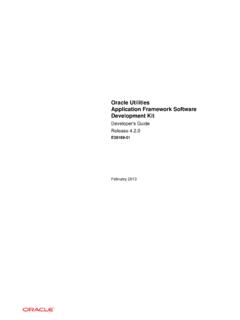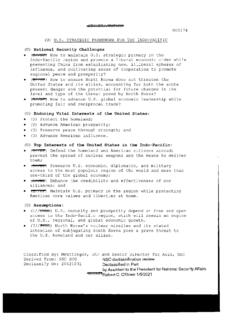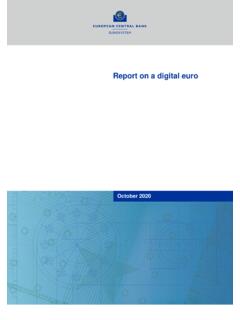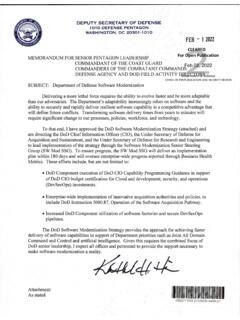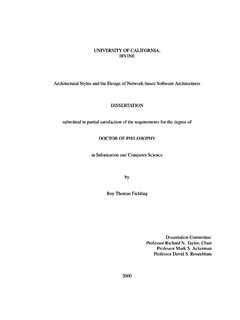Transcription of THE OECD PRIVACY FRAMEWORK
1 THE OECD PRIVACY FRAMEWORK 2013 ORGANISATION FOR ECONOMIC CO-OPERATION AND DEVELOPMENT The OECD is a unique forum where governments work together to address the economic, social and environmental challenges of globalisation. The OECD is also at the forefront of efforts to understand and to help governments respond to new developments and concerns, such as corporate governance, the information economy and the challenges of an ageing population. The Organisation provides a setting where governments can compare policy experiences, seek answers to common problems, identify good practice and work to co-ordinate domestic and international policies. The OECD member countries are: Australia, Austria, Belgium, Canada, Chile, the Czech Republic, Denmark, Estonia, Finland, France, Germany, Greece, Hungary, Iceland, Ireland, Israel, Italy, Japan, Korea, Luxembourg, Mexico, the Netherlands, New Zealand, Norway, Poland, Portugal, the Slovak Republic, Slovenia, Spain, Sweden, Switzerland, Turkey, the United Kingdom and the United States.
2 The European Union takes part in the work of the OECD. OECD 2013 Cover image: kentoh No reproduction, copy, transmission or translation of this document may be made without written permission. Applications should be sent to OECD Publishing: FOREWORD 3 THE OECD PRIVACY FRAMEWORK OECD 2013 Foreword Over many decades the OECD has played an important role in promoting respect for PRIVACY as a fundamental value and a condition for the free flow of personal data across borders. On 11 July 2013 the OECD Council adopted a revised Recommendation Concerning Guidelines Governing the Protection of PRIVACY and Transborder Flows of Personal Data ( PRIVACY Guidelines ). This revision is the first since the original 1980 release of the Guidelines and arises out of a call by Ministers in the 2008 Seoul Declaration for the Future of the Internet Economy to assess the Guidelines in light of changing technologies, markets and user behaviour, and the growing importance of digital identities.
3 The OECD Working Party on Information Security and PRIVACY (WPISP) agreed on Terms of Reference for the review in 2011. The Terms of Reference highlighted that, as compared with the situation 30 years ago, there has been a profound change of scale in terms of the role of personal data in our econo-mies, societies, and daily lives. The environment in which the traditional PRIVACY principles are now implemented has undergone significant changes, for example, in: The volume of personal data being collected, used and stored; The range of analytics involving personal data, providing insights into individual and group trends, movements, interests, and activities; The value of the societal and economic benefits enabled by new technologies and responsible uses of personal data; The extent of threats to PRIVACY ; The number and variety of actors capable of either putting PRIVACY at risk or protecting PRIVACY ; The frequency and complexity of interactions involving personal data that individuals are expected to understand and negotiate.
4 4 FOREWORD THE OECD PRIVACY FRAMEWORK OECD 2013 The global availability of personal data, supported by communi-cations networks and platforms that permit continuous, multipoint data flows. In accordance with the Terms of Reference, the WPISP convened a multi-stakeholder group of experts from governments, PRIVACY enforcement authorities, academia, business, civil society and the Internet technical community ( Expert Group ). This Expert Group was chaired by Jennifer Stoddart, PRIVACY Commissioner of Canada. Omer Tene, consultant to the OECD, served as rapporteur. On the basis of the work by the Expert Group, proposed revisions were developed by the WPISP, approved by the Committee for Information, Computer and Communications Policy (ICCP), before final adoption by the OECD Council.
5 Two themes run through the updated Guidelines. First is a focus on the practical implementation of PRIVACY protection through an approach grounded in risk management. Second is the need for greater efforts to address the global dimension of PRIVACY through improved interoperability . A number of new concepts are introduced, including: National PRIVACY strategies While effective laws are essential, the strategic importance of PRIVACY today also requires a multifaceted national strategy co-ordinated at the highest levels of government. PRIVACY management programmes These serve as the core opera-tional mechanism through which organisations implement PRIVACY protection. Data security breach notification This provision covers both notice to an authority and notice to an individual affected by a security breach affecting personal data.
6 Other revisions modernise the OECD approach to transborder data flows, detail the key elements of what it means to be an accountable organisation, and strengthen PRIVACY enforcement. As a step in a continuing process, this revision leaves intact the original Basic Principles in Part Two of the Guidelines. On-going work by the OECD on PRIVACY protection in a data-driven economy will provide further opportunities to ensure that its PRIVACY FRAMEWORK is well adapted to current challenges. This booklet brings together the key components of the OECD PRIVACY FRAMEWORK , along with the supplementary documentation to provide context and explanation. The cornerstone of that FRAMEWORK is the revised PRIVACY Guidelines, which form Chapter 1. FOREWORD 5 THE OECD PRIVACY FRAMEWORK OECD 2013 Chapter 2 contains a new supplementary explanatory memorandum that was been prepared to provide context and rationale for the revisions to the Guidelines.
7 It was approved for public release by the OECD Council when it adopted the revised Guidelines. It is intended to supplement not replace the original explanatory memorandum, which remains relevant to interpreting the aspects of the Guidelines that remain unchanged from 1980 and is reproduced as Chapter 3. Preparations for the review were conducted during 2010-11 in the context of the 30th anniversary of the PRIVACY Guidelines, during which the OECD organised a series of events and produced a report on The Evolving PRIVACY Landscape: 30 years after the OECD PRIVACY Guidelines. That report docu-ments the tremendous changes evident in PRIVACY landscape which motivated many of the revisions to the Guidelines and is reproduced as Chapter 4. The second part of this booklet focuses on a key dimension of effective PRIVACY protection in a global context: cross-border enforcement co-operation.
8 In 2007 the OECD Council adopted a Recommendation on Cross-border Co-operation in the Enforcement of Laws Protecting PRIVACY , reproduced as Chapter 5. Chapter 6 is the 2011 OECD report on the implementation of this Recommendation, three years after its adoption. The revised PRIVACY Guide-lines integrate and build on a number of elements from the 2007 Recom-mendation, and the two instruments are mutually reinforcing in helping improve the cross-border dimensions of what is fundamentally a global issue. TABLE OF CONTENTS 7 THE OECD PRIVACY FRAMEWORK OECD 2013 Table of contents PART I. THE OECD PRIVACY GUIDELINES .. 9 Chapter 1. Recommendation of the Council concerning Guidelines governing the Protection of PRIVACY and Transborder Flows of Personal Data (2013) .. 11 Part One. General .. 13 Part Two.
9 Basic principles of national application .. 14 Part Three. Implementing accountability .. 16 Part Four. Basic principles of international application: Free flow and legitimate restrictions .. 16 Part Five. National implementation .. 17 Part Six. International co-operation and interoperability .. 17 Chapter 2. Supplementary explanatory memorandum to the revised recommendation of the council concerning guidelines governing the protection of PRIVACY and transborder flows of personal data (2013) .. 19 19 Context of the review .. 19 Process of the review .. 21 Revisions to the Guidelines .. 23 PRIVACY management programmes .. 23 Data security breach notification .. 26 PRIVACY enforcement authorities .. 28 Transborder flows of personal 29 National implementation .. 31 International co-operation and 33 Improving the evidence base for policy making.
10 34 Other updates .. 34 Notes .. 36 References .. 37 8 TABLE OF CONTENTS THE OECD PRIVACY FRAMEWORK OECD 2013 Chapter 3. Original Explanatory Memorandum to the OECD PRIVACY Guidelines (1980) .. 39 39 I. General 40 II. The guidelines .. 47 Chapter 4. The evolving PRIVACY landscape: 30 years after the OECD PRIVACY Guidelines (2011) .. 65 Main points .. 66 The development and influence of the OECD Guidelines on the Protection of PRIVACY and Transborder Flows of Personal Data .. 69 Current trends in the processing of personal data .. 81 PRIVACY risks in the evolving environment .. 90 Considerations and challenges to existing PRIVACY approaches .. 96 Evolution and innovation in PRIVACY governance .. 102 Conclusion .. 114 PART II. CROSS-BORDER PRIVACY LAW ENFORECMENT CO-OPERATION .. 127 Chapter 5. Recommendation of the Council on Cross-border Co-operation in the Enforcement of Laws Protecting PRIVACY (2007).











